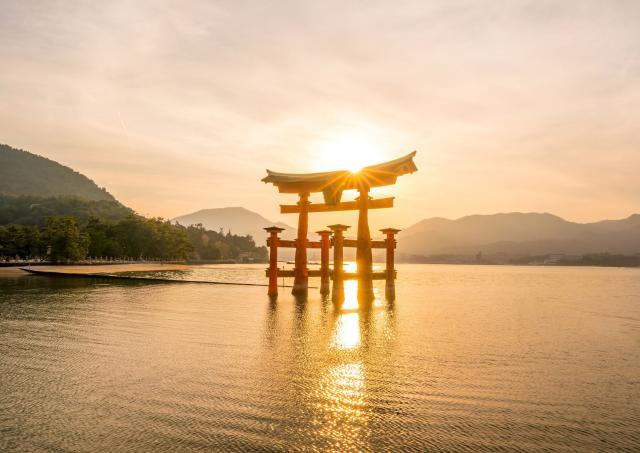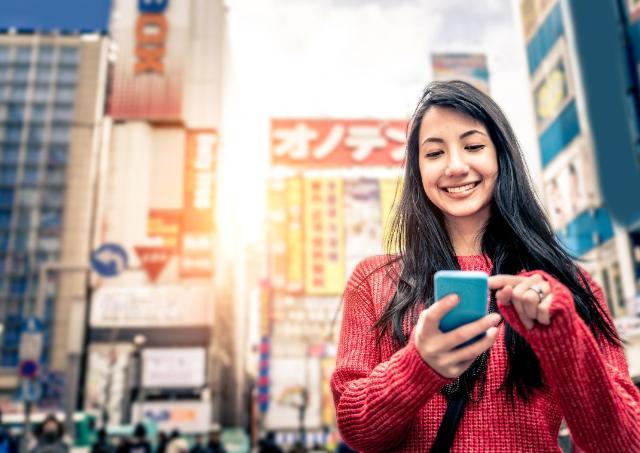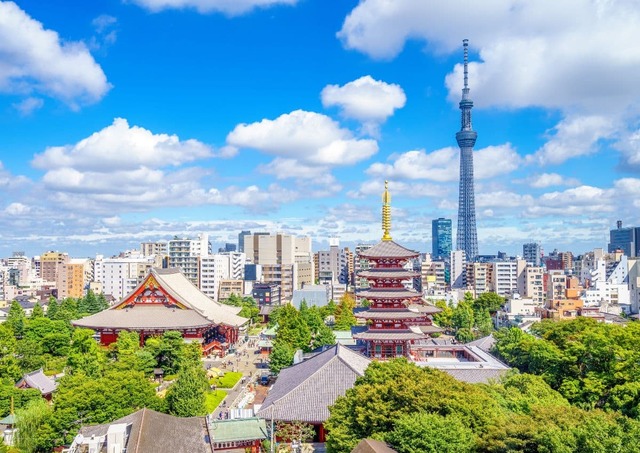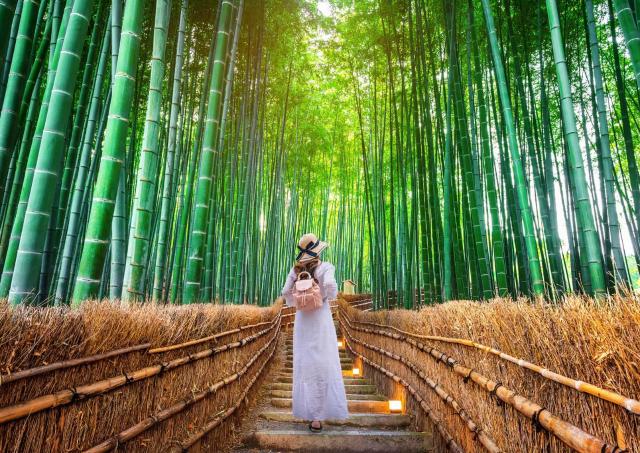The Ultimate Hiroshima Day Trip: Top Attractions, Local Cuisine, and Travel Tips
While many people associate Hiroshima with WWII, decades have now passed, and the city is once again a beautiful and bustling place to visit. Despite the devastation of the atomic bomb, there are still elements of the former traditions and culture, and there is an atmosphere of peacefulness and positive energy throughout the city.
All in all, Hiroshima is a place worth to visit, if only for a day! Here we will look at what to do with a day in the city.
Hiroshima Day Trip: Getting There and What to Do
Hiroshima Station is about 4-5 hours on the bullet train from Tokyo Station, or around 2 hours from Osaka Station. A popular option for visiting Hiroshima is to do so after visiting Osaka and Kyoto, as those cities are much closer than Tokyo, making it ideal for a day trip to Hiroshima.
Planning your trip to Hiroshima can be straightforward with the right information also because all the main attractions are located closely together. For a well-structured visit, consider following this Hiroshima day trip itinerary that covers key points of interest and maximizes your time in the city.
Planning Your Day Trip to Hiroshima
Here are some tips to help you plan your trip.
Best Time to Visit
The best time to visit Hiroshima is during the spring (March to May) and autumn (September to November) seasons. These periods offer mild weather and fewer crowds, making it an ideal time to explore the city and its attractions comfortably.
Getting There
The Sanyo Shinkansen Line connects Hiroshima Station to major cities. Travelling from Kyoto Station takes around 1 hour 40 minutes via Sakura or Nozomi trains, while from Shin-Osaka, it’s about 1 hour 30 minutes on the Shinkansen. If coming from Tokyo Station, expect a journey of approximately 4-5 hours on the Shinkansen. Travellers using the JR Pass can take the Sakura or Hikari trains at no extra cost. For budget-friendly options, a local train is also available.
For those interested in Hiroshima and Miyajima, the JR Ferry to Miyajima Island is covered under the JR Pass, making it an excellent extension to your trip.
Accommodation
Hiroshima has a wide range of accommodations, from budget-friendly guesthouses to luxury hotels. Consider staying in the city center for easy access to major attractions like the Hiroshima Peace Memorial Park and the Hiroshima Peace Memorial Museum. This central location will save you time and make your visit more enjoyable.
Transportation
Hiroshima offers an efficient public transportation system, including buses and trams. You can also rent bicycles or take taxis to get around. The city’s compact size and well-connected transport options make it easy to navigate and explore all that Hiroshima has to offer.
Itinerary for One Day in Hiroshima
Hiroshima Peace Memorial Museum
The Hiroshima Peace Memorial Museum displays a collection of photographs, artefacts, and information on the WWII atomic bombing that devastated Hiroshima in 1945.
The museum shows the pain and destruction of the bomb but offers a balanced outlook on why the city was selected as a target. It was created with the goal of promoting peace, and with the strong resolution to avoid a repeat of history.
Seeing the clothes, toys, and memorabilia left behind by the victims of the blast can be a very emotional experience, which may seem like a heavy start to the day, but it offers very important historical context on the city. By starting the day with it, you can understand the city more deeply and appreciate everything else you see in Hiroshima afterwards more deeply, too. Calculate around 2 hours to visit the Museum.
Hiroshima Peace Memorial Park and Atomic Bomb Dome
The museum is located in the centre of the Peace Memorial Park, a large green space in the city centre.
After the emotions of the museum, the park makes for a good place to go for a leisurely walk and let things process. From the park, you can also see the Atomic Bomb Dome, which remains as a representation of the importance of abolishing nuclear weapons and a UNESCO World Heritage Site.
The A-bomb Dome stands as a powerful symbol of the devastation caused by the atomic bomb, attracting visitors for reflection and remembrance of the tragedy that took place on August 6, 1945.
The heavy mood is lifted by the beautiful park and the understanding that everything here stands for the hope of peace. Allow for a leisurely walk around the park, if weather permits.
Lunch
Hiroshima offers a wide variety of international restaurants. After the morning’s activities, lunch at the bright and friendly Caffè Ponte is a great way to recharge for the afternoon.
Caffè Ponte is an Italian restaurant known for its pizza and pasta, and is located right by the Motoyasu River, with outdoor seating and a view of the Peace Memorial Park.
If you’re looking for something more specific to Hiroshima though, look out for Onomichi Ramen, eel, or oysters. Okonomiyaki savoury pancakes are also a Hiroshima specialty, but we’ll save those for dinner!
Hiroshima Castle and Hiroshima Gokoku Shrine
About a 20-minute walk from the Peace Memorial Park, you’ll find Hiroshima Castle, and the Hiroshima Gokoku Shrine on the castle grounds.
The castle was originally built in the 1500s, but after its destruction, was rebuilt in 1958. The castle was once called Koi-no-ura, which eventually became its current nickname of Carp Castle (“Rijo” in Japanese, as Koi changes pronunciation when combined).
Inside, the castle is like another mini museum, and there are great views of the city and its surroundings from the top. Outside, the architecture and style is close to the original.
There is a moat surrounding the castle, and on that same area of land is Gokoku Shrine. The shrine is easily recognisable from its giant stone torii gate, and is a popular location for festivals throughout the year.
Shukkeien Garden
Just a 10-minute walk from the castle grounds is the gorgeous Shukkeien Garden (pronounced shu-kei-en).
The garden has over 400 years of history, and is a landscape garden, which means that it has lots of different areas that are designed to reflect different landscapes from around Japan. As you are exploring the garden, you’ll also come across a few different tea houses with nice views of the gardens.
Dinner
Round off the day with an iconic Hiroshima dish: Okonomiyaki. Okonomiyaki is a type of thick, savoury pancake that is filled with all sorts of different vegetables and meat and topped with sauces.
The Hiroshima style is to cook noodles right into the pancake, making it even more filling and voluminous. At okonomiyaki places, you typically have a hot plate in front of you and are given the ingredients to mix and then cook for yourself, so you can order multiple different types to share with your travel partners.
There are plenty of different places to get okonomiyaki in Hiroshima, but a popular option is to visit Okonomi Mura, as it has four floors of over 20 different okonomiyaki places under one roof! Grab a beer with your dinner and you’re all set. If you are left with some energy from this one-day itinerary, you can also explore the party block of Nagarekawa.
Extra: Miyajima Island
In case you are spending two nights in Hiroshima, consider a side trip to Miyajima Island, known for its rich cultural heritage and scenic beauty. Take the local train to Miyajima-guchi, then board the JR Ferry, which is covered under the JR Pass. Once on the island, immerse yourself in its iconic sights:
Itsukushima Shrine & Floating Torii Gate – A breathtaking UNESCO World Heritage Site where the red gate appears to float on the Seto Inland Sea.
Daisho-in Temple – A peaceful Buddhist temple adorned with intricate statues and panoramic views of the island.
Miyajima Ropeway – Enjoy a scenic ride up Mount Misen, offering stunning views of the Seto Inland Sea and beyond.
Miyajima’s charm, combined with its Shinto shrines and untouched nature, makes it a perfect way to round out your Hiroshima itinerary.
We hope this itinerary gives you a good idea of what’s waiting for you in Hiroshima, and if you want to continue your Japan adventures further south, take a look at our post on why Okinawa is a great next destination!
Plan your trip with us
Get in touch with one of our travel consultants, they are ready to help you create the trip you always dreamed of.
Online Consultation



